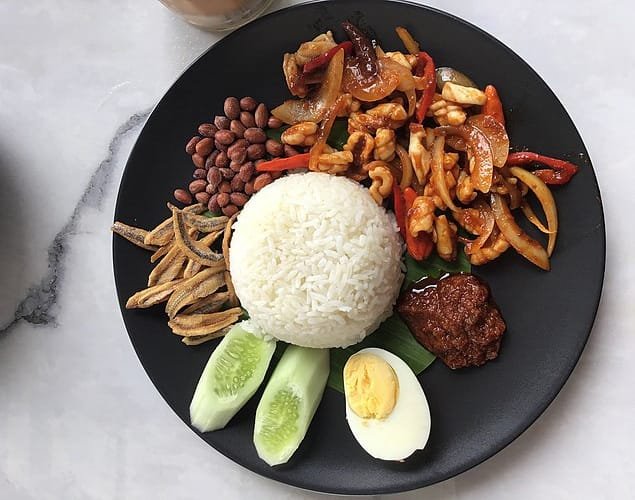South Korean cuisine has garnered immense popularity in India over the past decade, thanks to the global rise of K-pop, K-dramas, and a growing appreciation for Korean flavors. The bold, spicy, and umami-packed dishes have found a special place in Indian hearts and palates. Here’s a detailed look at the top 10 South Korean dishes that have captured the imagination of food lovers in India.
- Kimchi
Kimchi is the heart and soul of Korean cuisine, and its tangy, spicy, and fermented flavors have gained immense popularity in India. Made with napa cabbage, radish, or cucumber, Kimchi is seasoned with chili powder, garlic, ginger, and fish sauce. Its probiotic properties and versatility make it a favorite among health-conscious Indians. Restaurants and home chefs often incorporate it into fusion dishes like Kimchi fried rice or Kimchi dosa.
Why it’s famous in India: Its fermented, spicy nature resonates with Indian pickles, making it an instant hit.
- Korean Barbecue (Samgyeopsal)
Korean barbecue, particularly Samgyeopsal (grilled pork belly), has become a sensation among food enthusiasts in India. This DIY grilling experience, where diners cook their meat on a tabletop grill and pair it with sauces, lettuce wraps, and side dishes, offers a fun, interactive dining experience.
Why it’s famous in India: The concept of communal eating and customization aligns with Indian dining culture. Vegetarian options like grilled mushrooms and tofu also appeal to diverse dietary preferences.
- Bibimbap
Bibimbap, a vibrant mixed rice dish topped with sautéed vegetables, a fried egg, and gochujang (spicy red chili paste), has become a staple for those seeking healthy, balanced meals. Its colorful presentation and customizable ingredients make it appealing to Indians.
Why it’s famous in India: The mix of rice and vegetables, reminiscent of Indian pulao or khichdi, makes it relatable while offering a unique twist with its Korean flavors.
- Tteokbokki
Tteokbokki, a dish of chewy rice cakes cooked in a sweet and spicy gochujang sauce, is a beloved Korean street food that has found a fan base in India. Its spicy kick and satisfying texture appeal to Indian snack lovers.
Why it’s famous in India: Its bold flavors and street-food vibe resonate with India’s love for spicy, hearty snacks like chaat and pakoras.
- Korean Fried Chicken
Korean fried chicken, known for its double-fried, extra-crispy texture and sticky sauces, has become a crowd favorite. Flavors like sweet soy, garlic, and spicy chili are especially popular.
Why it’s famous in India: Indians love fried chicken, and the unique preparation method and flavors set Korean fried chicken apart from the usual options available.
- Ramyeon (Korean Instant Noodles)
Instant noodles are a staple in Indian households, and Korean Ramyeon has become a top choice. Brands like Samyang and Nongshim have introduced Indians to the joys of slurping spicy, flavorful noodles. The Samyang Buldak (spicy chicken flavor) noodles, in particular, have sparked trends like the “Spicy Noodle Challenge.”
Why it’s famous in India: Indians are avid noodle consumers, and the spicy, rich flavors of Korean Ramyeon align with Indian taste preferences.
- Bulgogi
Bulgogi, or marinated grilled beef, is a classic Korean dish that has gained traction in India. Its sweet, savory, and smoky flavor profile is achieved through a marinade of soy sauce, sugar, garlic, sesame oil, and pear juice.
Why it’s famous in India: The marinade’s flavor reminds many Indians of tandoori or kebab preparations, making it both exotic and familiar.
- Jjajangmyeon
Jjajangmyeon is a black bean sauce noodle dish that has become increasingly popular among Indian K-drama fans. This hearty and savory dish is made with thick noodles, a rich black bean sauce, and vegetables, sometimes with the addition of meat or seafood.
Why it’s famous in India: The unique black bean sauce and noodle combination appeal to Indian food lovers who enjoy saucy, flavorful dishes.
- Gimbap
Gimbap, often referred to as Korean sushi, consists of rice, vegetables, and proteins rolled in seaweed. Unlike Japanese sushi, Gimbap doesn’t always feature raw fish, making it more approachable for Indian palates.
Why it’s famous in India: Its portable, snackable nature makes it popular, and vegetarian-friendly versions cater to a wide audience.
- Bingsu
Bingsu is a Korean shaved ice dessert topped with sweet ingredients like red beans, fruits, condensed milk, and syrups. It’s a refreshing treat that has gained popularity in India’s hot climate.
Why it’s famous in India: Indians love chilled desserts like kulfi and falooda, and Bingsu’s light and customizable flavors make it a trendy alternative.
Fusion with Indian Flavors
The growing love for Korean cuisine in India has also given rise to innovative fusion dishes. Restaurants and home chefs are combining elements of both cuisines, such as Kimchi parathas, Ramyeon biryani, and Gochujang butter chicken. This blending of culinary traditions ensures that Korean food continues to evolve and remain relevant in the Indian food scene.
South Korean cuisine’s rise in India highlights the power of cultural exchange through food. From the spicy Tteokbokki to the refreshing Bingsu, Korean dishes have found a way to cater to India’s diverse taste preferences. With the increasing availability of Korean ingredients and the influence of K-culture, the love for Korean food in India is only set to grow.












